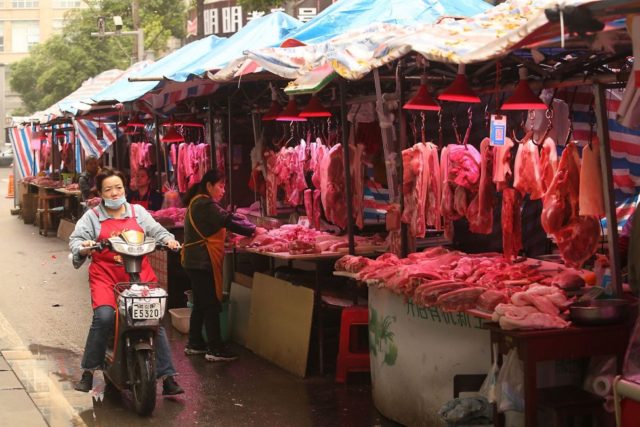March 30 (UPI) — Wildlife farms in southeast Asia were likely the original source of the coronavirus pandemic, not a Wuhan, China, market as originally thought, according to a World Health Organization report Tuesday on the origins of COVID-19.
The report indicates that the Huanan Seafood Wholesale Market in Wuhan was not the original source of the outbreak.
The WHO report also says that a leak from a Wuhan lab “was considered to be an extremely unlikely pathway.” Theories on the coronavirus origins had cited a leak from the Wuhan Institute of Virology as a possibility.
“There is no record of viruses closely related to SARS-CoV-2 in any laboratory before December 2019, or genomes that in combination could provide a SARS-CoV-2 genome,” the report states. “In view of the above, a laboratory origin of the pandemic was considered to be extremely unlikely.”
The 124-page report notes that animals in livestock farms in southeast Asia could be “linked to early human cases,” adding that further study is needed. It also says that no evidence suggests that the virus was spreading any earlier than the very end of 2019.
WHO investigators say the most likely original source is an intermediate animal host, possibly a wild animal captured and then raised on a farm. The investigation has not found what other animal was infected by a bat — considered the most likely source of the virus. That animal is believed to have transmitted the virus to a human.
The report says that Chinese officials don’t have information to explain how or when the virus began spreading.
Peter Daszak, a disease ecologist who was part of the investigative team that did research in China, told NPR last week that wildlife farms supply vendors at the Wuhan market, which was originally believed to be the starting point of the pandemic.
The WHO investigation has already come under criticism, even before the report’s release.
Jamie Metzl, a virus expert who serves on a WHO genetic engineering advisory committee, was among a group of scientists who signed a letter calling for a new study in China on the origins of the coronavirus.
Daszak told NPR that China shut down the wildlife farms in February 2020. The wildlife farms are part of a project that the Chinese government has been promoting for 20 years.
“They take exotic animals, like civets, porcupines, pangolins, raccoon dogs and bamboo rats, and they breed them in captivity,” Daszak said.
Then on Feb. 24, 2020, the Chinese government shut down the farms.
“What China did then was very important,” Daszak said. “They put out a declaration saying that they were going to stop the farming of wildlife for food.”
Daszak said the farms could be where the coronavirus jumped from a bat into another animal, and then into people.
The farms in the southern province of Yunnan breed animals known to carry coronaviruses. Virus experts found a bat virus that’s genetically 96% similar to SARS-CoV-2 in an area where many of the farms are located.
Daszak said evidence suggests these farms were supplying vendors at the Huanan Seafood Wholesale Market in Wuhan. That market was shut down on Dec. 31, 2019.
Linfa Wang, a virus expert who studies bat viruses at Duke-NUS Medical School in Singapore. said that after the outbreak at the Huanan market, Chinese scientists went there and looked for the virus.
“There was massive transmission going on at that market for sure,” Wang, who was also part of the WHO investigative team, told NPR.
“In the live animal section, they had many positive samples. They even have two samples from which they could isolate live virus.”
Daszak said the next step is to determine which animal carried the virus at one of the wildlife farms.

COMMENTS
Please let us know if you're having issues with commenting.